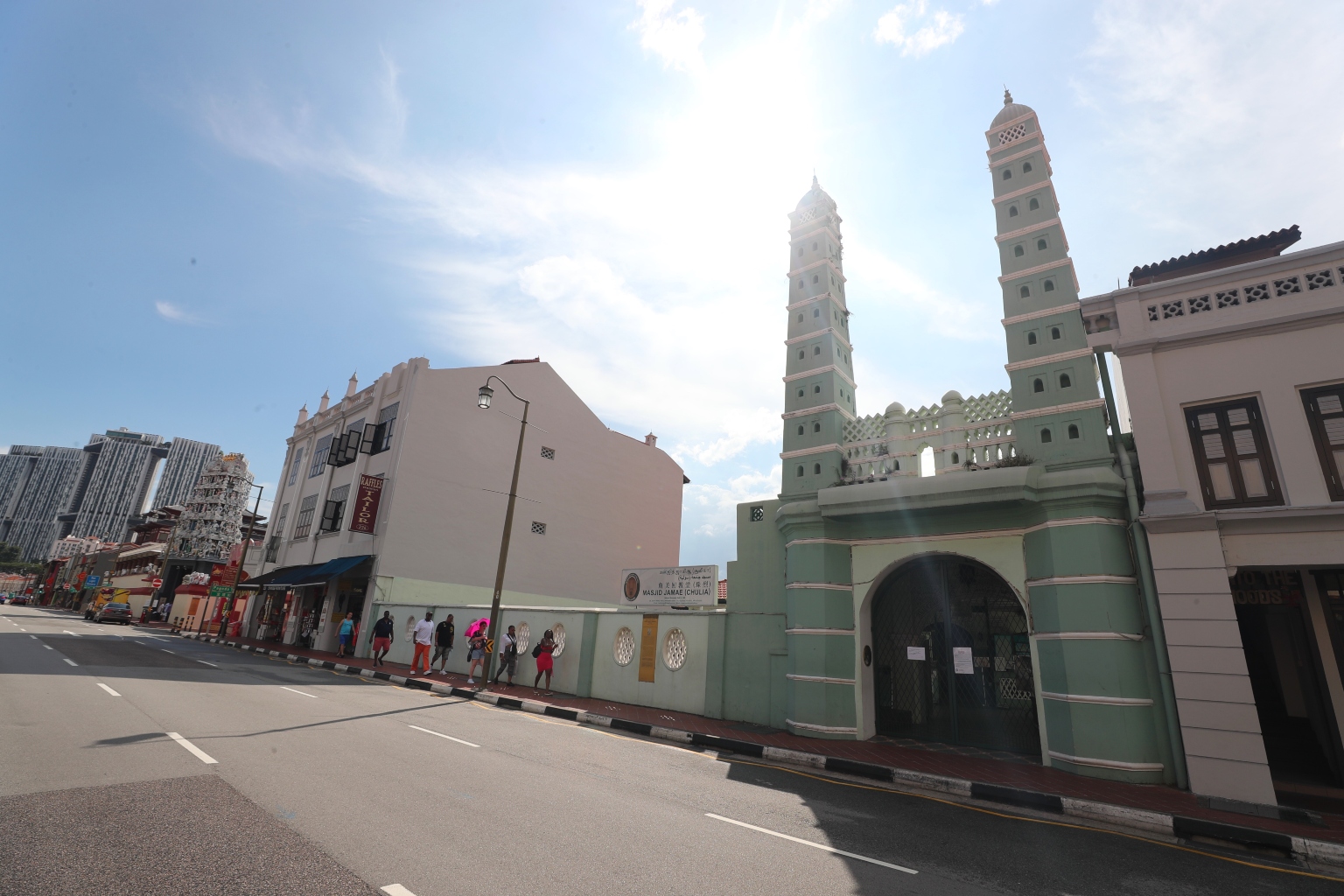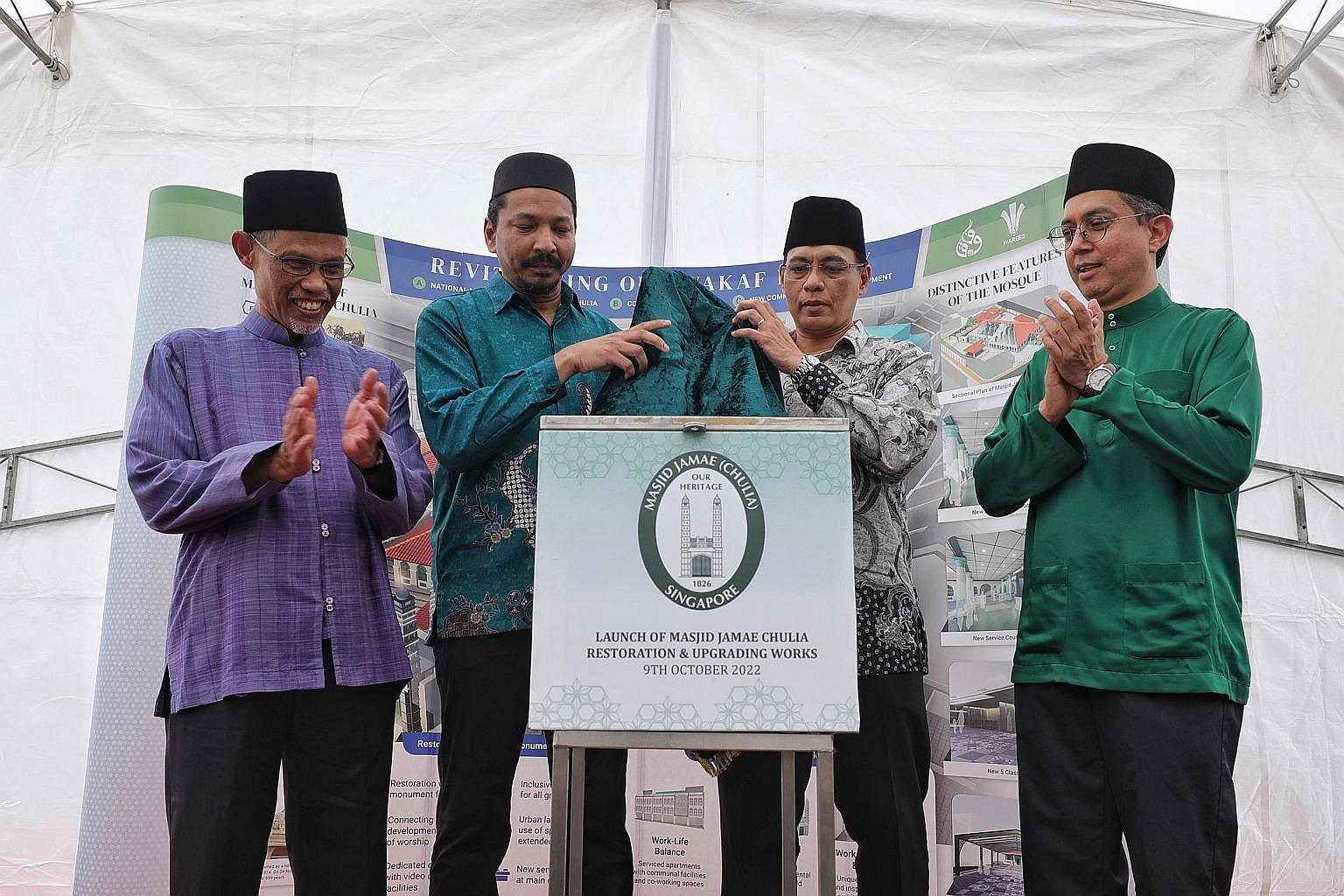196-year-old Jamae Chulia Mosque in Chinatown to get $3m restoration from end-2022
Sign up now: Get ST's newsletters delivered to your inbox

The mosque was last renovated more than a decade ago, mainly for roof works due to leaking and a paint job.
PHOTO: ST FILE
Follow topic:
SINGAPORE - One of Singapore's oldest mosques, Jamae Chulia Mosque, will undergo a year-long restoration, estimated to cost $3 million, from the end of 2022.
The 196-year-old mosque, located in Chinatown, will remain open for prayers during the restoration period. It was last renovated more than a decade ago, mainly for roof works due to leaking, and a paint job.
The mosque was originally built in 1826 to serve the Tamil Muslim community in Chinatown, who often refer to it as "Periya Palli" - Tamil for "Big Mosque".
The restoration will expand the classroom space, which currently fits 15 people, to five classrooms that can hold around 100 people in total. Jamae Chulia Mosque is one of the few in Singapore that holds Islamic religious classes in Tamil.
Ramps and handrails will also be installed to make the space more accessible and wheelchair-friendly. Works will also include treating the rising water dampness in the walls, repairing surface cracks, and restoring timber fixtures and rusted ironmongery.
A new community plaza will be built in the open space behind the mosque, to be used for festive occasions, celebrations and communal functions.
The space can also be used for prayers, increasing the mosque's capacity for congregants from 1,500 to 1,700.
At the launch of the restoration project on Sunday, Minister of State for National Development Muhammad Faishal Ibrahim said: "Many of you here have shared with me stories of how you grew up with the mosque during our engagement sessions, and I am very heartened that you take pride in preserving and protecting Jamae Chulia Mosque so that it can continue to be experienced and utilised by our future generations.
"The Indian Muslim community has made valuable contributions towards building our community of success. We are fully supportive of the efforts to uplift the community as we undertake this journey together."
The mosque was built by South Indian Tamil Muslim migrants, under the guidance of Chulia pioneer Anser Saib. The Chulias were early migrants from the Coromandel Coast of Southern India, and were mostly small traders and money changers.
The restoration project will also set up a customer service counter near the main entrance to cater to tourists, as the mosque is a popular attraction within the Chinatown belt.
It is among three Islamic heritage buildings in the Chinatown area, alongside Al-Abrar Mosque and Nagore Darga.
Jamae Chulia Mosque was put under the charge of the Islamic Religious Council of Singapore (Muis) in 1968, and gazetted as a national monument in 1974. It is believed to be the oldest among the five mosques that are monuments.

Other mosques that are national monuments in Singapore include Sultan Mosque and Hajjah Fatimah Mosque.
The estimated $3 million needed for the project will be gathered through online collections by the community and other fundraising projects.
Chairman of Jamae Chulia Mosque Rasheed Zaman said he hopes to see support for the project from the larger community, not just Indian Muslims.
He said: "Being in the Central Business District, we have a lot of congregants coming to the Masjid, and they have been supporting us in the form of donations and volunteering. A Masjid is for all Muslims, so we are hoping for all Singapore Muslims to come forward and donate for this cause."
Muis also announced that a commercial mixed-development, including short-term communal residences and co-working spaces, will be built behind the mosque through its subsidiary, Warees Investments. It will redevelop the land under its Wakaf Revitalisation Scheme to maximise the overall value of the land.
More details will be announced in the second quarter of 2023, with the development expected to be ready by 2025.
An example of a development under the scheme is Wakaf Al-Huda in Bukit Timah. A plot of land that was once home to two dilapidated kampung houses was redeveloped into a semi-detached strata cluster housing development, generating a sustainable income for Al-Huda Mosque.

